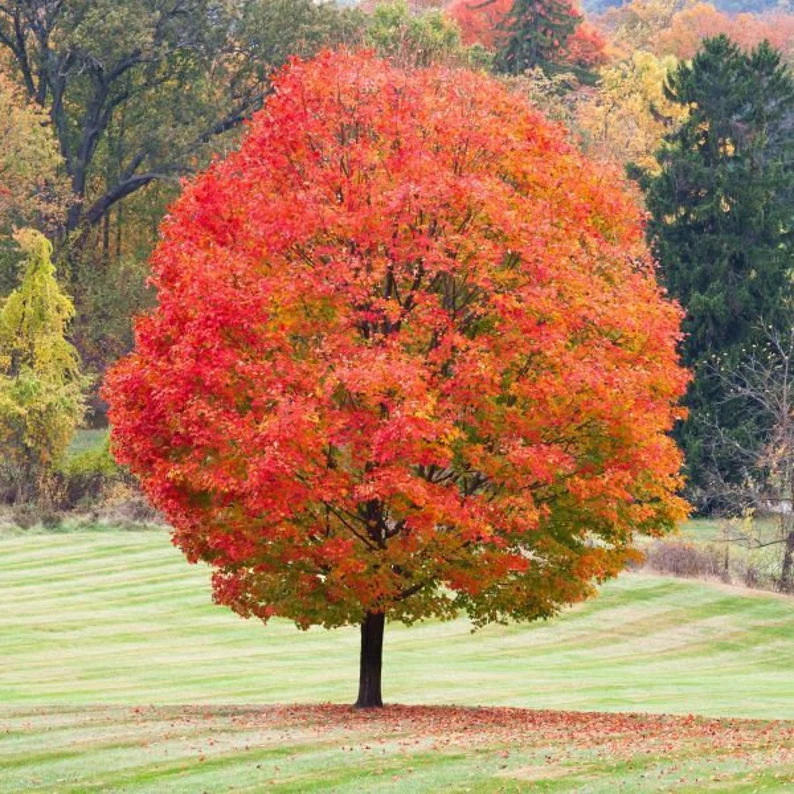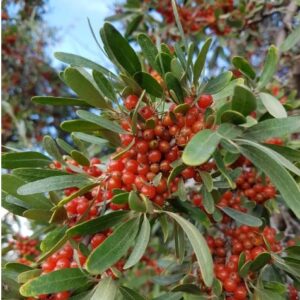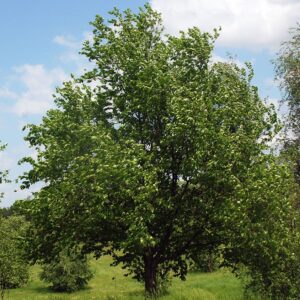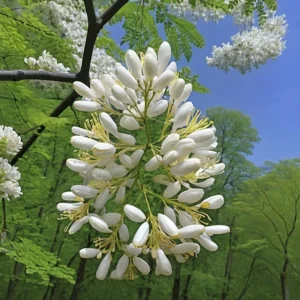Description
Sugar Maple Tree – 1 Yr Old Seedling
Overview
The Sugar Maple (Acer saccharum) is a beloved deciduous tree renowned for its stunning fall foliage and the sap used to produce maple syrup. Known for its tall, sturdy trunk and broad canopy, the Sugar Maple is an excellent shade tree for residential and public landscapes. It also plays a key role in the ecosystem by providing food and shelter for various wildlife. This 1-year-old seedling is an ideal start for anyone looking to plant a long-lasting, majestic tree.
Native Range
Native to northeastern North America, the Sugar Maple thrives in forests and woodlands, often found in fertile soils of the central and eastern United States, and parts of Canada.
Growth and Form
- Height: Typically grows 18–24 inches annually in the first few years, reaching 40–60 feet at maturity.
- Spread: Mature trees have a canopy spread of 30–50 feet.
- Growth Rate: Moderate growth, with some trees reaching 24 inches per year under ideal conditions.
- Foliage: Dark green leaves turn brilliant yellow to orange and red in fall, offering spectacular seasonal color.
- Bark: Smooth, grayish bark on young trees that becomes furrowed and darkens as the tree matures.
Ecological Benefits
- Wildlife Habitat: Provides shelter and food for a variety of wildlife, including squirrels, birds, and insects.
- Shade and Cooling: With its large canopy, the Sugar Maple provides excellent shade, helping reduce heat in urban environments.
- Soil Health: Its fallen leaves enrich soil, contributing organic matter and improving soil structure.
Hardiness and Climate Tolerance
- Hardiness Zones: 3–8, making it suitable for a wide range of climates, from cold northern regions to warmer southern areas.
- Cold Tolerance: The Sugar Maple is cold-hardy, capable of surviving harsh winters and temperatures as low as -30°F (-34°C).
- Drought Tolerance: While it prefers consistent moisture, it can withstand moderate drought once established.
- Soil Preferences: Thrives in well-drained, fertile, loamy soils but can tolerate a variety of soil types, including slightly acidic to neutral pH.
Planting and Care
- Planting Location: Prefers full sun to partial shade. For optimal growth, plant in areas that receive at least 6 hours of sunlight daily.
- Watering: Ensure consistent moisture, especially in the first few years. Water regularly during dry spells until the tree becomes established.
- Fertilization: Apply a slow-release balanced fertilizer in early spring to promote healthy growth.
- Pruning: Minimal pruning required. Prune dead or damaged branches in late winter or early spring before new growth begins.
Uses
- Maple Syrup Production: Sugar Maples are famous for their sap, which is used to make maple syrup. Ideal for syrup enthusiasts looking to tap their trees once they mature.
- Landscaping and Shade: Perfect for large yards and urban landscapes, providing both aesthetic beauty and shade in hot climates.
- Timber Production: The wood of the Sugar Maple is valued for its strength and is often used in furniture making, flooring, and cabinetry.
Potential Problems
- Tapping Injury: Over-tapping can weaken the tree. Always follow recommended tapping guidelines to ensure the tree remains healthy.
- Pests and Diseases: Sugar Maples may be susceptible to pests like aphids, scales, and certain fungal diseases. Regular monitoring can help catch issues early.
- Root Competition: Sugar Maples prefer to be planted away from large, competitive tree roots to avoid growth inhibition.






Reviews
There are no reviews yet.